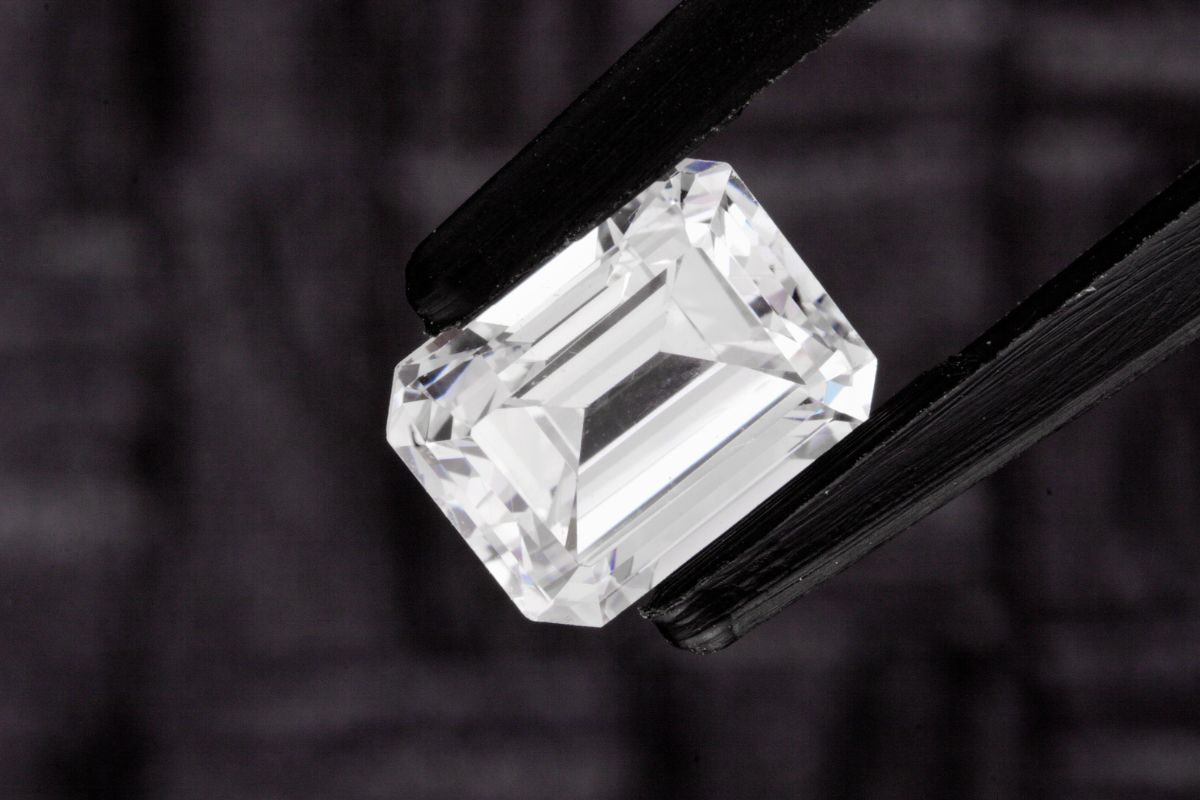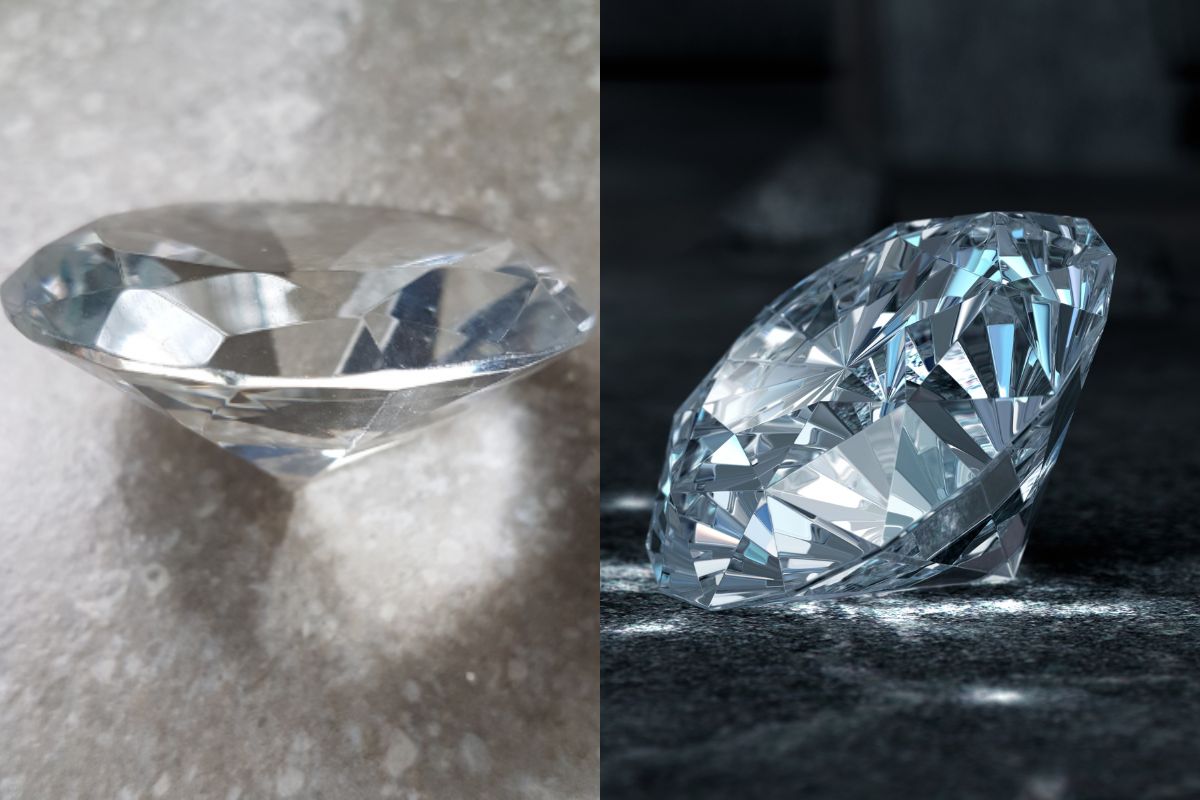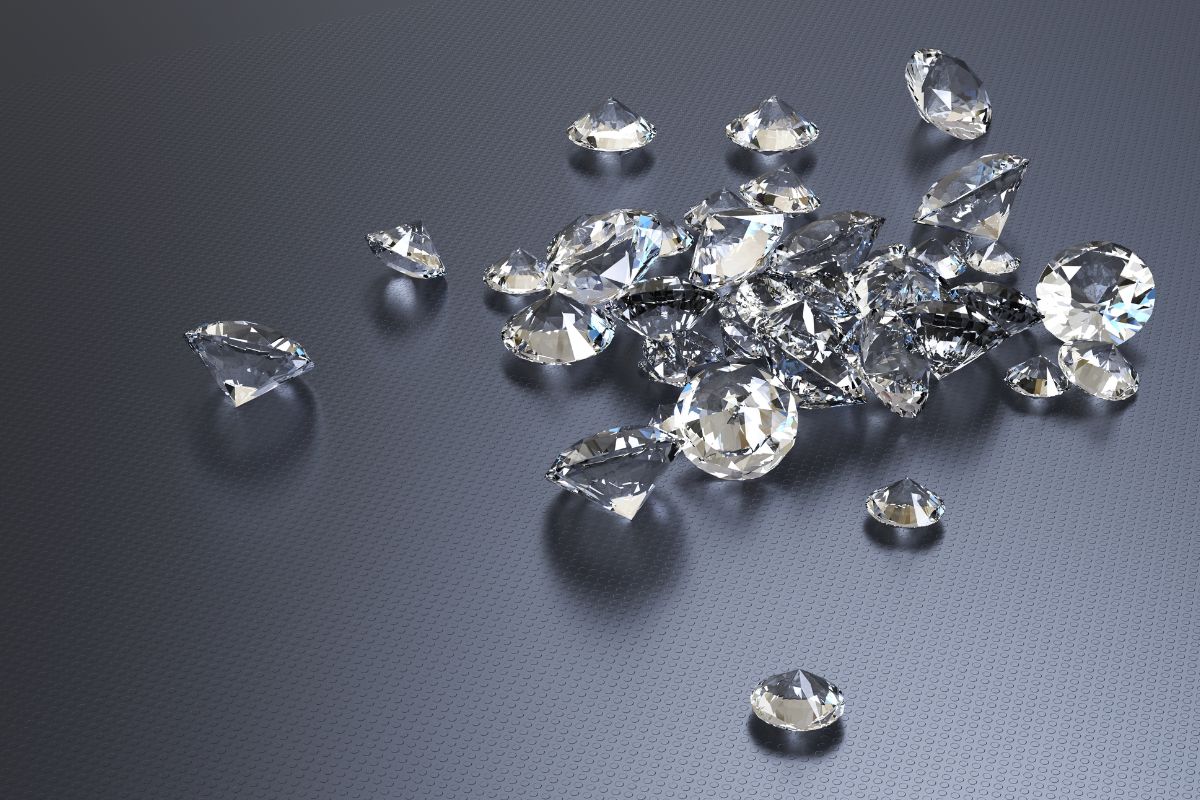
Are i3 Diamonds Worth Buying: Evaluating Value and Clarity
When considering purchasing a diamond, one of the key factors you might evaluate is the clarity grade, which affects both the appearance and value of the gem. I3 diamonds represent a very specific tier within the clarity grading scale – it stands for "Included 3" and is at the bottom end of the scale. These diamonds contain noticeable inclusions, which are internal flaws, and surface blemishes visible to the naked eye without magnification. Owing to these characteristics, I3 diamonds are often significantly less expensive than those with higher clarity grades.
The worth of an I3 diamond largely depends on what you are looking for and how much you value clarity. For some, the appeal of a large diamond at a lower price point could outweigh the presence of noticeable inclusions. On the other hand, you may find that the visible imperfections detract from the diamond's beauty and brilliance. Whether or not an I3 diamond is worth buying can also be influenced by the type and location of the inclusions, as some may affect the stone's structural integrity.
Table Of Contents
- Understanding Diamond Clarity and I3 Grading
- Evaluating I3 Diamonds for Purchase
- Comparing Clarity Grades
- Pricing and Value Considerations
- Selecting the Right Diamond
- Exploring Alternatives to I3 Diamonds
- Shopping for I3 Diamonds
- Jewelry Considerations
- Advanced Knowledge on I3 Diamonds
- Frequently Asked Questions
It's important to weigh the pros and cons of lower clarity diamonds against your personal preferences and budget. Diamonds with a rating of I3 can offer a more affordable entry point into diamond ownership, but it’s vital to make an informed decision. Understanding how to grade the quality of a diamond and determine its appropriate cost is essential. For further insights on the nuances of diamond clarity and quality, consider consulting guides such as "How to Buy a Diamond: Insider Secrets for Getting Your Money's Worth".
Understanding Diamond Clarity and I3 Grading
When considering diamond clarity, you must understand the grading system that categorizes the presence of inclusions and flaws. I3 clarity grade diamonds sit at the bottom of this scale, known for their visible inclusions.
Clarity Grade Definitions
The Gemological Institute of America (GIA) classifies diamond clarity based on the visibility, number, and size of internal characteristics called inclusions, as well as external characteristics known as blemishes. These gradings range from:
- Flawless (FL): No inclusions or blemishes visible under 10x magnification
- Internally Flawless (IF): No inclusions and only insignificant blemishes visible under 10x magnification
- Very, Very Slightly Included (VVS1 and VVS2): Inclusions so slight they are difficult for a skilled grader to see under 10x magnification
- Very Slightly Included (VS1 and VS2): Inclusions are observed with effort under 10x magnification but can be characterized as minor
- Slightly Included (SI1 and SI2): Inclusions are noticeable to a skilled grader under 10x magnification
- Included (I1, I2, and I3): Inclusions are obvious under 10x magnification and may affect transparency and brilliance
I3 Clarity Characteristics
I3 clarity diamonds possess numerous inclusions, often visible to the naked eye without any magnification. These inclusions can be of such a size and number that they affect the stone's transparency and possibly its durability. The term lowest clarity grade is typically associated with I3 diamonds due to these pronounced inclusions and flaws. However, this clarity grade can offer affordability for those prioritizing size or other characteristics over flawlessness. Remember that each diamond is unique and even within the I3 category, the appearance of inclusions can vary significantly.
Evaluating I3 Diamonds for Purchase

When considering an I3 diamond, your focus should be on understanding its unique characteristics and how they might affect both appearance and longevity. These diamonds can offer value if you prioritize what's most important to you.
Assessing Brilliance and Sparkle
An I3 diamond is on the lowest tier of the clarity scale and will contain very noticeable inclusions, potentially impacting its brilliance and sparkle. When you look at an I3 diamond, examine how light passes through; this affects how vibrant and lively the diamond appears. Brilliance refers to the white light reflections from the interior and surface of the diamond, while sparkle, or scintillation, is about how it disperses light into flashy sparkles or colored fire.
- Under Magnification: Use a jeweler's loupe to inspect the diamond's light performance closely.
- Viewing Conditions: Observe the diamond's reflectivity under various lighting conditions to gauge its brilliance.
Considering Durability and Stability
The inclusions in an I3 diamond can also affect its durability. Significant inclusions could potentially weaken the diamond's structure. However, if the inclusions are not surface-reaching, they may have less impact on the diamond's stability.
- Surface Inclusions: Check for any cracks or chips that can affect durability.
- Location and Type of Inclusions: Understand where the inclusions are located and determine the nature of these inclusions—whether they are internal or surface-reaching.
Remember, every I3 diamond is unique. Paying close attention to these specific factors will guide you in determining if an I3 diamond aligns with what you value in a gemstone.
Comparing Clarity Grades

When evaluating diamonds, clarity is a crucial factor that affects both appearance and value. Knowing the differences between grades can guide you in selecting a diamond that meets your expectations and budget.
I1 and I2 Diamonds
I1 and I2 clarity diamonds typically have inclusions visible to the naked eye. I1 diamonds may have inclusions that are noticeable but often do not greatly detract from the stone's beauty or structural integrity. On the other hand, I2 diamonds usually display more prominent inclusions, potentially affecting the stone's brilliance.
- I1 Clarity: Visible inclusions; limited impact on sparkle
- I2 Clarity: More obvious
Pricing and Value Considerations
When exploring diamond options, you should consider the balance between affordability and future value. I3 diamonds often present a cost-effective choice upfront, but it's essential to understand how their pricing aligns with long-term investment potential.
Affordability of I3 Diamonds
I3 diamonds are known for their affordability, often priced significantly lower than higher clarity grades. This lower price point allows you to save money or allocate funds towards a larger stone or a more intricate setting. Affordable I3 diamonds may have visible inclusions, but they can still make a beautiful choice for jewelry, especially if you prioritize size over flawless appearance.
Resale Value Insights
When considering resale value, be aware that I3 diamonds typically do not hold their value as well as those with higher clarity ratings. If you are looking at your diamond purchase as an investment, you may find that the value of I3 diamonds decreases more over time, which can impact price when you decide to sell. However, if resale is not a primary concern, the initial savings could be more attractive for your immediate needs.
Selecting the Right Diamond
When choosing a diamond, the value and beauty are significantly influenced by the diamond's cut, color, carat weight, and clarity, collectively known as the 4 Cs. The setting of the diamond can enhance its appearance, giving prominence to the center stone and complementing it with the desired accents.

Balancing the 4 Cs
- Cut: The cut of the diamond is paramount as it dictates the brilliance and fire of the stone. Aim for a cut that reflects light well, which could mean prioritizing cut over other characteristics. For an engagement ring, a well-cut center stone will catch the eye with its sparkle.
- Color: Color in diamonds ranges from colorless to shades of yellow. If you're considering an I3 clarity diamond, a hint of color can sometimes mask inclusions, making it a strategic choice.
- Carat: Carat refers to the weight of the diamond. Higher carat diamonds are rarer, but your choice should balance the size with quality. A diamond's size is visible, but there's no substitute for quality.
- Clarity: I3 diamonds have visible inclusions. While they offer value, ensuring the inclusions don't threaten the stone's structure is crucial.
Choosing the Right Setting
-
Engagement Ring Settings: The right setting can make a significant difference. For I3 diamonds, consider a setting that can protect and mask some of the inclusions.
- Bezel: A bezel setting encircles the diamond, offering protection and potentially hiding some inclusions.
- Halo: A halo of smaller diamonds can draw attention away from inclusions and enhance the ring's overall sparkle.
-
Center Stone and Accents:
- Center Stone: Your primary focus, it should exhibit the best combination of the 4 Cs within your budget.
- Accents: Select accents that complement the center stone without drawing unwanted attention to its flaws.
Selecting the right diamond involves considering each of these factors and understanding how they contribute to the stone's overall appearance and value. Your choice should align with your personal preferences and budget, ensuring that you find a diamond that fulfills your desires.
Exploring Alternatives to I3 Diamonds

When considering the purchase of diamonds, you aren't limited to I3 clarity grades with visible imperfections. There are options that offer both beauty and value without compromising on quality.
Lab-Grown Diamond Options
Lab-grown diamonds present a modern choice that aligns with both ethical and economic considerations. Lab-diamonds are identical to mined diamonds in composition but are created in controlled environments, making them a more sustainable and often less expensive alternative. Furthermore, the technology behind lab-grown diamonds has advanced to a point where they can surpass I3 diamonds in clarity and cost less than higher-graded natural diamonds.
Comparison to Other Gemstones
moissanite is a gemstone known for its durability and brilliance, which can rival that of diamonds. It's a stone with remarkable optical properties, offering a fiery sparkle at a fraction of the cost. Moissanite rates high on the Mohs scale of hardness, so it is suitable for everyday wear, just like diamonds. Opting for moissanite or other lab diamonds
Besides lab-grown diamonds, could yield savings while delivering the aesthetic appeal and longevity you seek in jewelry.
Shopping for I3 Diamonds
When you consider purchasing an I3 diamond, knowing where to shop and what certifications to look for is crucial for making an informed decision. Understanding the pros and cons of online shopping will also guide you towards a satisfactory purchase.
Retailers and Certification
When selecting a retailer for your I3 diamond, you should look for reputable companies such as James Allen and Blue Nile. Both retailers offer a range of I3 diamonds, often at competitive prices. It is essential that the diamond is certified to ensure its characteristics are accurately represented. Certifications from the Gemological Institute of America (GIA) or the American Gem Society (AGS) are the most esteemed, providing a reliable guarantee of your diamond's quality.
- James Allen: Detailed online visualization tools.
- Blue Nile: Wide selection and price options.
- Certifications to consider: GIA, AGS.
Online Shopping Benefits
Shopping for diamonds online, particularly at establishments like Whiteflash, allows you to benefit from detailed product descriptions and high-resolution images. Lab-grown diamonds, which are gaining popularity, can also be a cost-effective option and are often available through these channels. Online retailers may offer more competitive prices due to lower overhead costs in comparison to traditional brick-and-mortar stores.
- Advantages: Better pricing, comprehensive imagery, direct shipping.
- Considerations: Lab-grown diamonds, return policies.
Jewelry Considerations
When selecting jewelry, particularly pieces like engagement rings and earrings, it's essential to consider how the quality of the diamond, including clarity, will influence both the appearance and value of your piece.
I3 Diamonds in Earrings and Accents
I3 diamonds, which fall on the lower end of the clarity scale, can still play a role in your jewelry. In earrings or as accent stones, these diamonds often offer a more budget-friendly option without significantly compromising the overall look of the piece. When set in earrings, the reduced clarity is less noticeable, especially if they are small and positioned at a distance from the observer. Your focus might be more on the diamond's shape and setting rather than seeking an eye-clean diamond, which typically refers to a stone that has no inclusions visible to the unaided eye when viewed from approximately 6-10 inches away.
In earrings, the movement and play of light can help to obscure inclusions. However, it's important to remember that I3 diamonds will lack the pristine clarity found in higher grades, which might be more apparent in larger stones or those that sit close to the eye, such as in engagement rings. In these cases, opting for a higher clarity grade might be preferable to ensure the diamond's imperfections do not detract from the beauty and brilliance of the piece.
Advanced Knowledge on I3 Diamonds

When considering I3 diamonds, the presence of inclusions and the capacity to optimize for aesthetics are pivotal. These components affect the value and appearance, making it essential to understand their implications fully.
The Role of Inclusions in I3 Diamonds
Inclusions are internal characteristics that can diminish the transparency and optical qualities of a diamond. An I3 clarity diamond, which is the lowest grade on the Gemological Institute of America (GIA) clarity scale, contains inclusions that are visible to the naked eye. These may take various forms, such as clouds, feathers, or crystals, and can impact the diamond's brilliance by obstructing the path of light which reduces sparkle.
Optimizing I3 Diamond Aesthetics
When it comes to enhancing the visual appeal of an I3 diamond, the cut is critical. An Ideal cut or A Cut Above® Hearts and Arrows diamond is precisely crafted to deliver the maximum light return, brilliance, and fire, even if the stone has significant inclusions. A well-executed cut can mitigate some effects of inclusions on an I3 diamond's appearance, emphasizing the importance of choosing a diamond that balances its clarity characteristics with a high-quality cut.
Frequently Asked Questions
When considering an I3 grade diamond, it's essential to understand its specific characteristics. These frequently asked questions will give you a comprehensive insight into what I3 diamonds offer and help guide your decision when contemplating their purchase.
What are the characteristics that determine the value of an I3 grade diamond?
The value of an I3 grade diamond is largely determined by its visible inclusions, which are more pronounced and numerous compared to higher-grade diamonds. These inclusions often affect the stone's transparency and brilliance.
Do I3 diamonds offer a sufficient brilliance and sparkle compared to higher clarity diamonds?
I3 diamonds tend to have less brilliance and sparkle than their higher clarity counterparts due to the significant inclusions that can diffuse the light passing through, resulting in less light reflection and sparkle.
How does the clarity of I2 diamonds compare with that of I3 diamonds?
I2 diamonds typically have fewer and slightly less obvious inclusions than I3 diamonds, potentially offering a marginal improvement in appearance with respect to clarity, although they still fall into the heavily included category.
Can the inclusions in I3 diamonds impact their durability and are there any common issues to be aware of?
The inclusions in I3 diamonds can impact their structural integrity, making them more susceptible to chips or cracks. It's crucial to be aware of this potential vulnerability when deciding on an I3 diamond.
Are I3 diamonds suitable for daily wear or are they better for occasional use?
Due to their tendency to have more inclusions, which can affect their strength, I3 diamonds might be better suited for occasional wear to minimize the risk of damage rather than for daily wear.
What should be considered when deciding if I3 diamonds are a good purchase for an engagement ring or other jewelry?
When considering I3 diamonds for an engagement ring or other jewelry, you should weigh the cost savings against the visible inclusions and potential durability concerns. If budget is a primary concern and you are comfortable with the trade-offs, an I3 diamond might be suitable for you.
Checkout some of our top collections:










